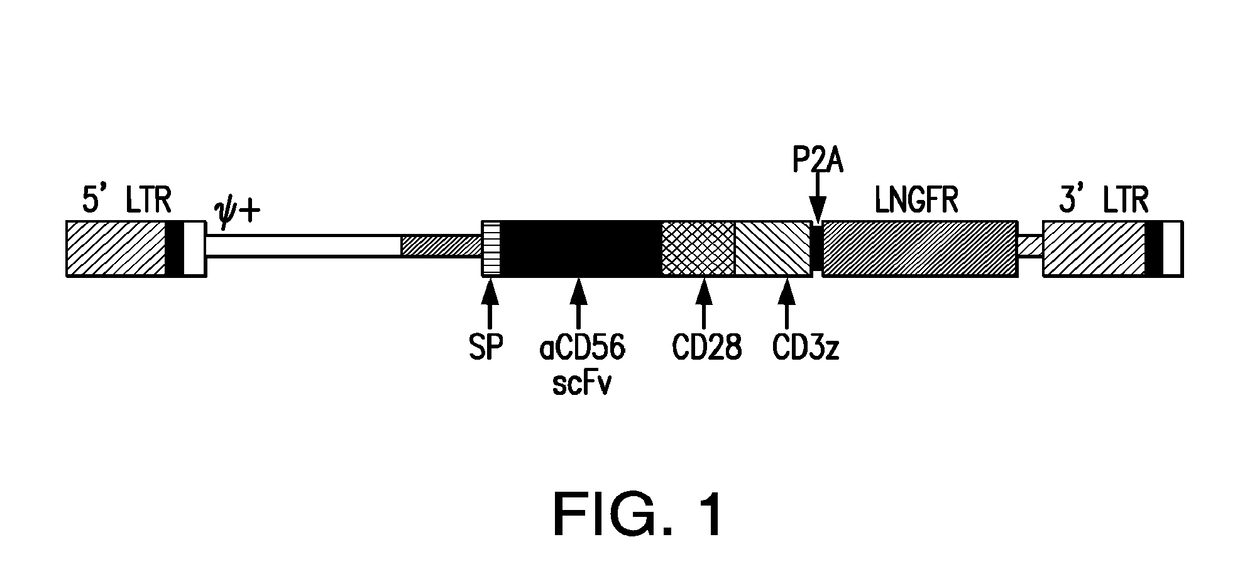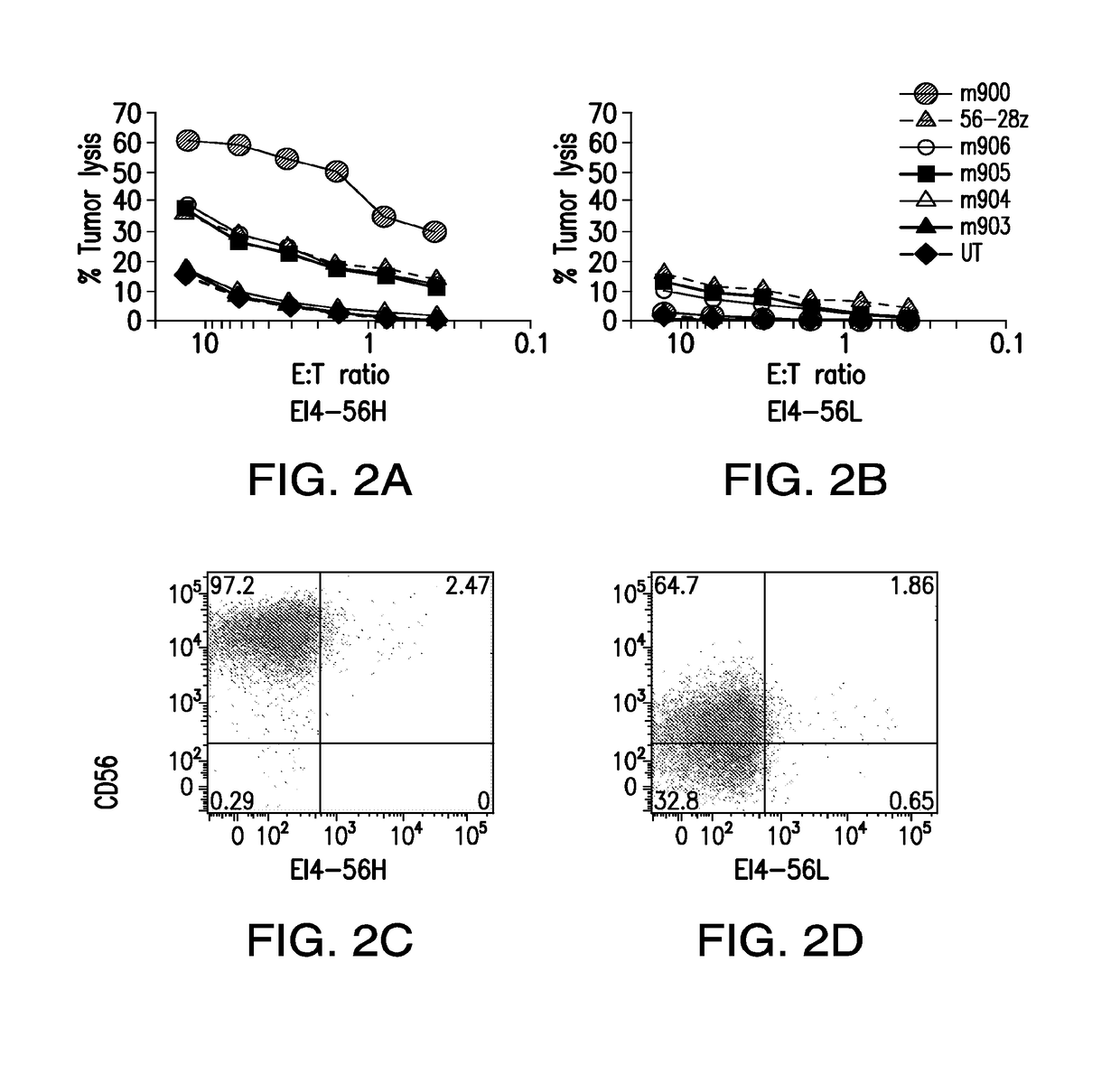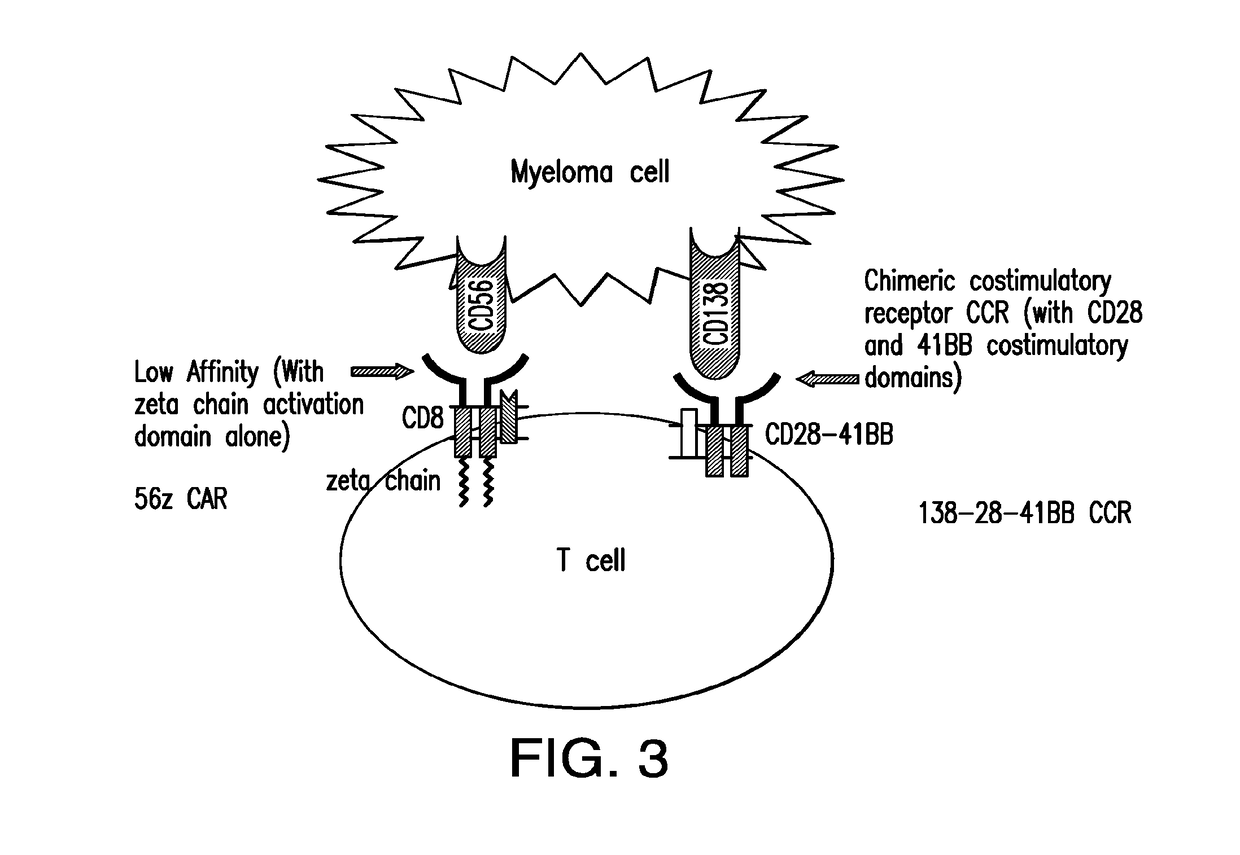Antigen-binding proteins targeting cd56 and uses thereof
a technology of cd56 and antigen, which is applied in the field of antigen-binding proteins targeting cd56, can solve the problems of inacceptable “off tumors”, and achieve the effects of reducing tumor burden, reducing tumor burden, and reducing tumor cells
- Summary
- Abstract
- Description
- Claims
- Application Information
AI Technical Summary
Benefits of technology
Problems solved by technology
Method used
Image
Examples
example 1
Generation and CTL Activity of CD56-Specific CARs
[0339]CARs based on the following scFv's were generated: m903, m904, m905, m906, and m900 (also referred to herein as m907) according to the structure shown in FIG. 1. The binding affinities of m903, m904, m905, m906, and m900 to human CD56 were assessed by Biacore analysis, and the results are summarized in Table 7 below. It was found that m900 binds to a different epitope on human CD56 from m903, m904, m905, and m906, and m903, m904, m905, and m906 bind to the same epitope on human CD56. CAR m900 has the highest binding affinity to human CD56.
TABLE 7CD56 FabsCD56 FabsKD (M)m900*Fab432.902 × 10{circumflex over ( )}−9m906Fab46-194.490 × 10{circumflex over ( )}−9m905Fab46-89.172 × 10{circumflex over ( )}−9Fab468.382 × 10{circumflex over ( )}−8m904Fab46-H39.088 × 10{circumflex over ( )}−8m903Fab46-E52.365 × 10{circumflex over ( )}−7
[0340]The CTL activity of these CARs as well as a CAR comprising a scFv of the murine monoclonal anti-CD56...
example 2
CTL Activity of a T Cell Expressing a CD56-Specific CAR and a Truncated CAR
[0341]A T cell expressing CAR m900 and a truncated CAR targeting CD138 was generated. The truncated CAR comprises a scFv that binds to CD138, and a transmembrane domain comprising a CD8 polypeptide (referred to as “138del”). The CTL activities of T cells expressing CAR m900 alone and T cells expressing a combination of CAR m900 and 138del (referred to as “CAR m900+138del”) were assessed. As shown in FIGS. 5A and 5B, the CTL activity of m900 was comparable to the CTL activity of CAR m900+138del.
example 3
CD56 Targeted Immunotherapy for Multiple Myeloma Using Chimeric Antigen Receptors
3.1 Methods
[0342]CARs and vectors: Syntheses of SFG-19z1-ΔLNGFR and SFG-19-28z have been previously described (Markley and Sadelain, IL-7 and IL-21 are superior to IL-2 and IL-15 in promoting human T cell-mediated rejection of systemic lymphoma in immunodeficient mice. Blood. 115(17):3508-3519 (2010)). The SFG-19z1-ΔLNGFR plasmid that includes a P2A bicistronic element was used as a template to obtain SFG-P28z-ΔLNGFR and SFG-19-28z-ΔLNGFR constructs. The sequence of the murine anti hCD56 antibody N901 (Roguska, et al. Humanization of murine monoclonal antibodies through variable domain resurfacing. Proc Natl Acad Sci U S A. 91(3):969-973 (1994)) was codon optimized and substituted as an Ncol-N901scFv-Notl oligonucleotide to create the SFG-56-28z-ΔLNGFR construct. Similarly, the sequences of m903, m904, m905, m906 and m900 anti-CD56 scFvs (see Tables 1-5) generated by phage display technology were used t...
PUM
| Property | Measurement | Unit |
|---|---|---|
| Fraction | aaaaa | aaaaa |
| Cell death | aaaaa | aaaaa |
| Cytotoxicity | aaaaa | aaaaa |
Abstract
Description
Claims
Application Information
 Login to View More
Login to View More - R&D
- Intellectual Property
- Life Sciences
- Materials
- Tech Scout
- Unparalleled Data Quality
- Higher Quality Content
- 60% Fewer Hallucinations
Browse by: Latest US Patents, China's latest patents, Technical Efficacy Thesaurus, Application Domain, Technology Topic, Popular Technical Reports.
© 2025 PatSnap. All rights reserved.Legal|Privacy policy|Modern Slavery Act Transparency Statement|Sitemap|About US| Contact US: help@patsnap.com



